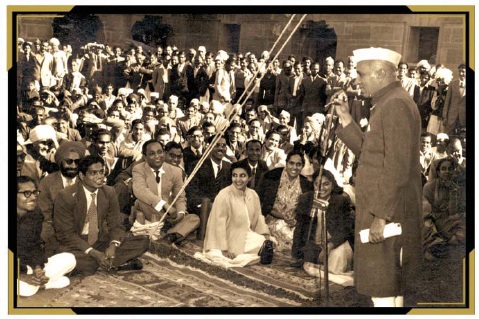#Fight with Covid_19
Ideas of Development
- Any discussion on development is bound to generate contradictions, conflicts and arguments.
- ‘Development’ was about becoming more ‘modern’ and modern was about becoming more like the industrialised countries of the West.
- Modernisation was associated with the ideas of growth, material progress and scientific rationality.
Planning
- Despite the various differences, there was a consensus on one point: that development could not be left to private sectors. So, there was the need for the government to develop a design or plan for development.
- In 1944, the big industrialists drafted a joint proposal for setting up a planned economy in the country known as Bombay Plan.
- Soon after India became independent, the Planning Commission came into being as Prime Minister its chairperson.
The Early Initiatives
- The draft of the First Five Year Plan and then the actual Plan Document, released in December 1951, generated a lot of excitement in the country.
- The excitement with planning reached its peak with the launching of the Second Five Year Plan in 1956 and continued somewhat till the Third Five Year Plan in 1961.
- The First Five Year Plan (1951-1956) addressed mainly the agrarian sector including investment in dams and irrigation.
- One of the basic aims of the planners was to raise the level of national income, which could be possible only if the people saved money than they spent.
Rapid Industrialisation
The second Five Year Plan stressed on heavy industries. It was drafted by a team of economists and planners under the leadership of PC Mahalanobis.
Key Controversies
The strategy of development followed in the early years raised several important questions.
Agriculture Versus Industry
- After first two plans agriculture could not develop at appreciable level. Gandhian economist J.C. Kumarappa proposed an alternative blueprint that put greater emphasis on rural industrialisation.
- Some others thought that without a drastic increase in industrial production, there could be no escape from the cycle of poverty.
Public Versus Private Sector
- India adopted ‘mixed economy’ where elements of both public and private sector exist together.
- Critics argued that the planners refused to provide the private sector with enough space and the stimulus to grow. The enlarged public sector produced powerful vested interests that created enough hurdles for private capital.

Due to rising Global Demand for Iron, the reserved Iron-resource of Orissa has been an important investment destination to be signed a memorandum of understanding (MoU) to bring in capital investment and employment opportunities. Some conflicts arose in Orissa like tribal population feared to be displaced from home and environmentalists became worried about environmental pollution.
2. ‘Development’ refers to process of living standard and attaining an economic level of industrial production. Immediately after independence, the Indian government took up the tasks of poverty attenuation, social and economic redistribution and development of agriculture.
3. Planning is a systematic regulation of purposeful activity to achieve national goals. India was inspired by USSR for planning to provide basic necessities of life i.e. advanced education, medical care and technological skills. ‘Bombay Plan’ was drafted in 1944 to make the states to take major initiatives in industrial and other economic investments.
4. The Planning Commission of India was set up in 1950 as an ‘Extra-constitutional body’ alongwith Prime Minister as its chairman, ministers incharge and some other members to be advisory in nature. It helps to reduce the wastage of time and increase the per capita income.
5. Before independence, the need for planning was felt to set up National Planning Committee in 1930s to collect data and setting aims as well as opted for five year plans and annual budget.
6. The first five year plan, commenced in 1951, drafted by economist K.N. Roy aiming at
investment in dams and irrigation, land reforms and to raise the level of National Income. It differed from second five year plans which stressed on heavy industries by bringing about quick structural transformation. 1